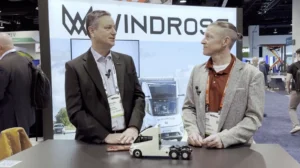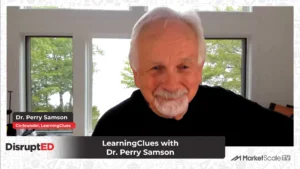5 Steps to Protect Your Condensate System from Destructive Corrosion
Primary Causes and How to Prevent Them
In boiler systems, steam that has completed its work condenses back into liquid water called condensate. This is a high-purity, high-heat-content water that makes sense to recycle into the boiler system whenever possible to save money, water, energy, and chemicals.
Protecting your plant’s condensate return system is vital not only because it is a massive capital investment, but also because it can impact your day-to-day operations. The primary causes of destructive corrosion are carbonic acid attack and oxygen pitting. This corrosion can cause unexpected system shutdowns, affecting production timelines. Corroded systems are also less efficient, risking leaks and potentially catastrophic damage to the boiler as corrosion byproducts are carried into the feedwater.
Carbonic Acid Attack
Carbonic acid attack occurs when carbon dioxide from the steam condenses with the condensate to form carbonic acid. The carbon dioxide originates from the thermal breakdown of the carbonate alkalinity naturally present in the makeup water. Since the condensate is so pure, it requires very little dissolved carbon dioxide to lower the condensate pH into the corrosive range. The greater the makeup alkalinity, the greater the amount of carbon dioxide present in the steam, which increases the potential for carbonic acid attack in the condensate return system.
A carbonic acid attack is characterized by “grooving” of the condensate piping, which typically presents as thinning of the pipe at the threaded fitting. This same deterioration can also be spotted downstream of steam traps.
Oxygen Pitting
Another frequent type of corrosion is oxygen pitting, caused by dissolved oxygen in the condensate, which may occur when oxygen is not completely removed from the feedwater. Dissolved oxygen may also be present as a result of the vacuum created when steam condenses and cools, pulling oxygen-rich air into the system. Oxygen pitting is characterized by an intense, localized pitting that may or may not be covered by a tubercule. Due to the restrictive nature of oxygen pitting, it can cause rapid metal failure in a condensate system and is especially aggressive if the condensate pH is low.
Condensate System Protection
An effective protection and treatment plan can be divided into five main categories: neutralizing amines, filming amines, volatile oxygen scavengers, pretreatment equipment, and treatment program monitoring.
- Neutralizing Amines: The most common method of preventing a carbonic acid attack is through neutralizing amines. These chemicals, such as morpholine, cyclohexylamine, and diethylaminoethanol (DEAE), become volatile when mixing with steam and condense in the same way that the carbon dioxide does. They then neutralize the carbonic acid and increase the condensate pH. However, this process is ineffective in protecting against oxygen pitting.
- Filming Amines: A filming amine provides a protective barrier against both carbonic acid and oxygen. When using a filming amine, the pH is usually maintained between 6.0 and 7.5, so a neutralizing amine may still be required. Since the protective film formed by filming amines are susceptible to damage, it is critical to use corrosion coupons to monitor the effectiveness of corrosion control. Another significant limitation of filming amines is that they can be difficult to apply and cause fouling, particularly in systems where they have not been applied previously. A filming amine program should be initiated very gradually to help avoid this problem and users should be aware of the limitations.
- Volatile Oxygen Scavengers: A volatile oxygen scavenger such as DEHA (diethylhydroxyamine) can also be used to protect your condensate system against oxygen pitting. DEHA has fewer limitations than filming amines and can provide even better results since it both scavenges oxygen and passivates system metals, making them less susceptible to corrosion. It can be an economical option to use DEHA for oxygen scavenging along with a neutralizing amine for controlling carbonic acid attack.
- Pretreatment Equipment: Since carbonic acid is a primary cause of corrosion in condensate systems, using pretreatment equipment to reduce or remove the sources of carbon dioxide up front can be very beneficial. A dealkalizer unit downstream of a water softener will reduce the alkalinity of the makeup water going to the boiler. A reverse osmosis unit will not only reduce the alkalinity but will also reduce other dissolved solids in the boiler makeup water allowing the system to run at higher cycles of concentration, which can save fuel and water. An economic analysis of which two equipment options is best would need to be conducted.
- Treatment Program Monitoring: Condensate monitoring will depend on the treatment methods you have used, but in any case, your system should be tested using the following methods:
-
- Testing soluble and insoluble iron levels
- Using condensate corrosion coupons
- Testing pH levels.
It is important to test the pH levels along various points in the condensate return system to avoid low pH areas that are more prone to corrosion. If a filming amine or oxygen scavenging DEHA is used, the residual should be measured.
Conclusion
These methods can provide system operators who want to protect both a capital investment and their day-to-day operations with a number of protective options, but the most effective protection comes from partnering with an industry expert such as Chem-Aqua.
Chem-Aqua is a global leader in custom-designed programs for boiler, cooling, and process water systems. Since 1919, our success has been built upon our Total System Approach, providing solutions for water treatment problems and improving water system efficiencies. Learn more about how we can help protect your systems at our website.
Read more at chemaqua.com









